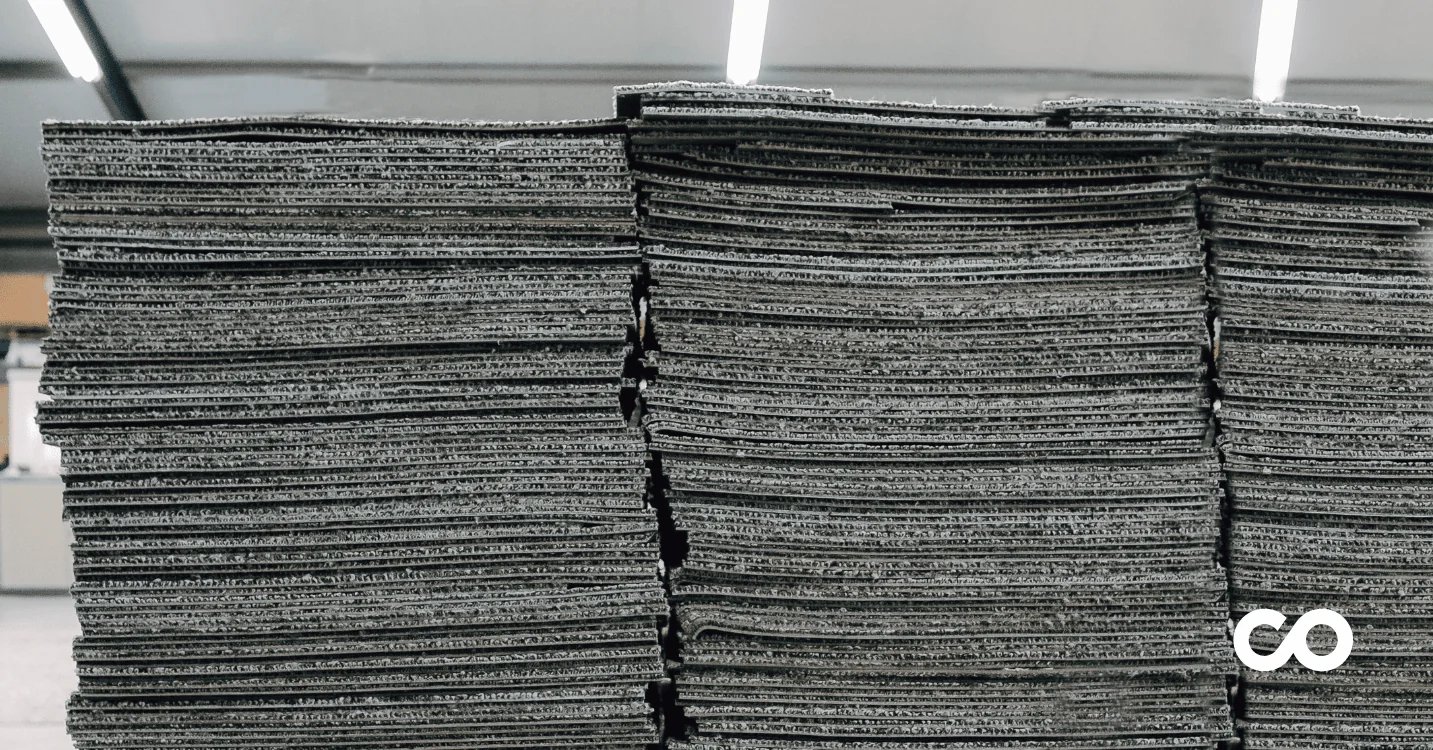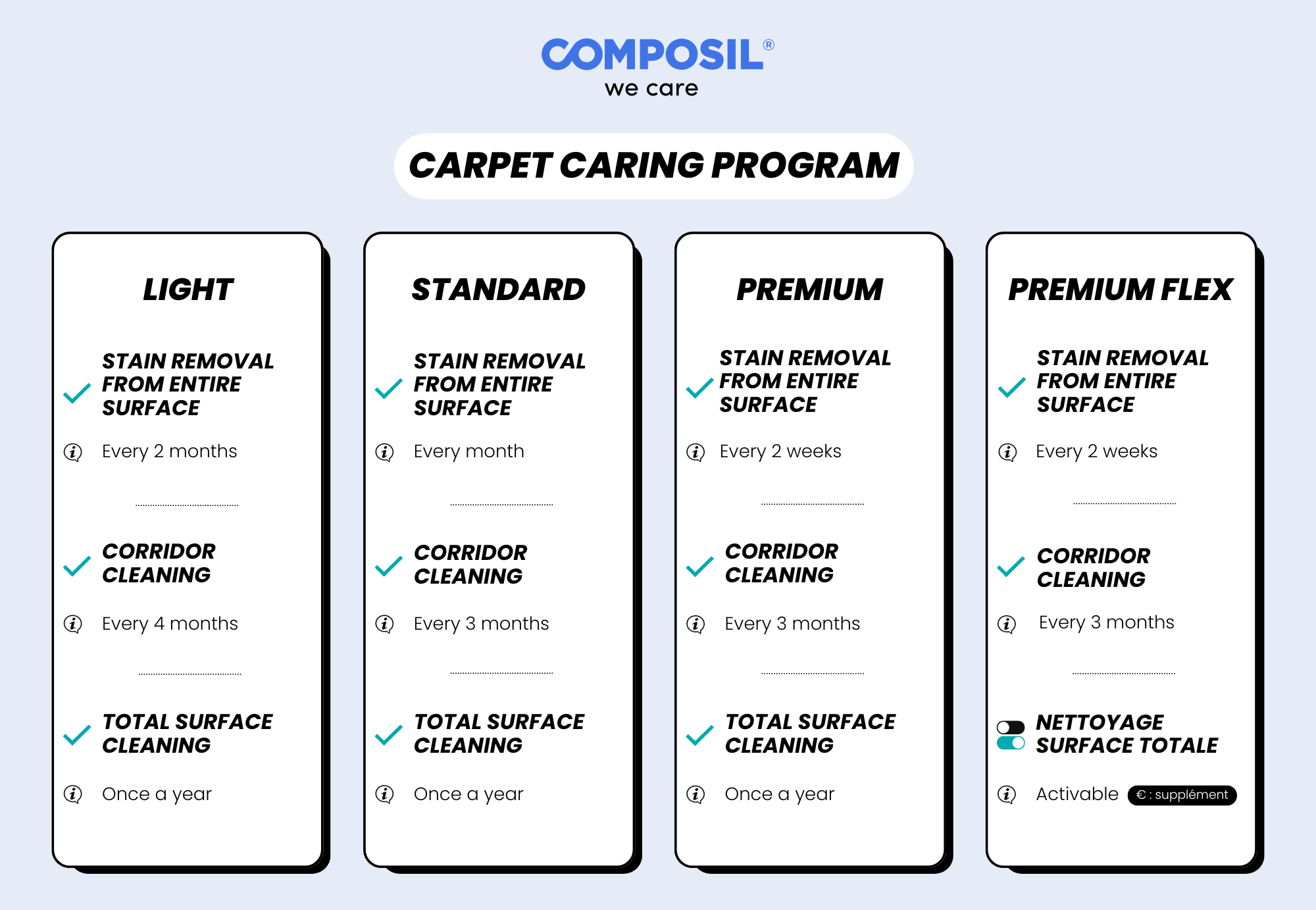Sustainable Building Materials: Save Costs with Reused Carpet
Author: Léo M.
What You will discover:
Reused carpet is an innovative solution for sustainable building materials. This article explores its economic advantages, such as cost reduction and CO₂ emissions, as well as its integration into your projects and maintenance. You will also discover our savings calculator to evaluate the financial and ecological benefits, along with case studies illustrating its positive impact on sustainable office projects.

If you are a project manager, purchasing manager, or a leader looking to reduce the carbon footprint while optimizing costs, the choice of sustainable building materials, including sustainable building carpet, is crucial.
Have you considered reused carpet? Often overlooked, it offers numerous benefits for eco-friendly projects, particularly for flooring solutions.
In this article, discover how to integrate reused carpet into your sustainable building materials for a sustainable future while meeting your economic and ecological goals.
What is a sustainable or eco-friendly materials ?

The construction sector accounts for about 38% of global CO₂ emissions and 50% of natural resources extracted (United Nations Environment Programme). These figures highlight the urgency to rethink our material choices. But what exactly do we mean by "sustainable materials" or "eco-friendly"?
In general, a building material is considered sustainable if it is produced responsibly, uses renewable resources, minimizes energy consumption and CO₂ emissions, and can be recycled or reused at the end of its life.
An eco-friendly material, on the other hand, refers to a material that has a low environmental impact throughout its life cycle, from production to disposal. Reused carpet meets these criteria by allowing for effective reuse of materials, making it an ideal example of sustainable building materials and sustainable building carpet.
Some Examples of Sustainable and Eco-Friendly Materials
A wide variety of sustainable building materials, including sustainable building carpet, are already available in the construction market. Among these options, some stand out for their effectiveness and positive environmental impact.
Here are some examples of sustainable materials that combine performance and ecological respect:
🌱 Hempcrete
Made from a mixture of lime, hemp, and water, hempcrete is a lighter material than traditional concrete. It effectively redistributes moisture, improving its thermal performance. Its porous structure also provides good sound insulation by absorbing sounds.
🧱 Monomur Brick
Made from natural materials like raw or fired earth, and especially without the addition of harmful chemicals. Their thickness and numerous cells promote natural regulation of indoor temperature, reducing heating and cooling needs.
🌴 Bamboo
A renewable resource, bamboo grows quickly in various environments, minimizing the need for polluting transport. Its strength—up to eight times that of wood—makes it an excellent choice, and it also acts as a powerful carbon sink, absorbing 30% more CO₂ than most trees while producing a significant amount of oxygen.
🐑 Sheep wool
Sheep wool stands out for its ability to absorb up to 30% of its weight in water, providing excellent thermal insulation properties. In addition to being 100% recyclable, it is also easy to install and move. Unlike other insulating materials, sheep wool poses no risk of skin or respiratory irritation.
Why Choose Reused Carpet for Your Sustainable Buildings?
In addition to natural and renewable materials, certain solutions allow for the prolongation of existing products' life, thus reducing the need for new resources. Among these solutions, reused carpets, as a type of sustainable building carpet, stand out: instead of being discarded after a few years of use, they can be recovered, refurbished, and reused in new construction projects.
Too often, end-of-life carpets end up in incinerators, but they represent one of the few materials capable of offering a very high recovery rate. With interesting economic and environmental advantages, why not choose this solution?
How Does Carpet Reuse Work?
The concept is based on three key steps: recovery, refurbishment, and reuse of carpets from deconstruction sites. These used carpets are generally burned after only a few years of use, which is not only a waste of resources but also a source of avoidable CO₂ emissions.
🔥 Burning oil with oil? It’s time to rethink these practices when we consider the carbon impact of the construction sector. Fortunately, solutions are evolving.
At Composil, we offer a more sustainable solution: our reuse and recycling program is not only eco-friendly but also economically advantageous compared to incineration. Once recovered, carpets are sorted, deep-cleaned, and restored before being reintroduced to the market as sustainable building carpet.
Here is an illustration of our reuse program:
%20(1).webp?width=3000&height=2075&name=eng%20Carpet%20reuse%20program%20(1)%20(1).webp)
♻️ Result: This approach extends the life of carpets and reduces the overproduction of materials, contributing to more sustainable and eco-friendly construction and deconstruction projects.
The Economic Benefits of Reuse
In addition to environmental benefits, carpet reuse offers significant economic advantages:
- Significant savings: Reused carpets are often available at reduced prices, allowing for notable savings compared to new options.
- Reduction in project costs: By choosing reused materials, including sustainable building carpet, you minimize not only the purchase cost but also the costs of waste management.
- Stock online at Composil:
- 30,000 m² of references
- Offered at 50% of the new purchase price. 😉
The Environmental Benefits of Reuse
- Reduction of CO₂ emissions: By reusing existing carpets, including sustainable building carpet, you reduce the demand for new raw materials and thus decrease emissions related to production.
- Decrease in waste: Less carpets incinerated, less pollution, and less wasted resources. Composil also offers a recycling solution for carpets at the end of their life.
Case Study: How Our Clients Transformed Their Spaces Through Reuse
Discover how our clients transformed their spaces by integrating reused carpets as part of their sustainable building carpet choices. These case studies illustrate the tangible benefits and results that our solutions can offer.
Entrusts Composil with the Management of 17,800 m² of Used Carpet from Former BNP Paribas Fortis Offices
Collaborating with local and Brussels-based partners, the project went smoothly and demonstrates the high reclamation capacity of carpets in real estate renovation projects.
Transforms a WeWork Space with 2,055 m² of Reused Carpet from Composil ReUse Catalog
Discover a project that illustrates the effectiveness of reclaimed materials, saving 20.5 tons of CO2 while proving that sustainability can be economically advantageous.
Simulate Your CO₂ and Cost Savings Online
To help you assess the benefits of reuse, Composil offers an online calculator that allows you to quickly and easily estimate the ecological and financial savings associated with the recycling or reuse of carpets, including sustainable building carpet.
🎯 Quick Estimate: In just a few minutes, you can find out how much CO₂ you have saved and the cost reductions for your project.
Try our tool now and commit to a more sustainable management of your materials.
How to Integrate Reused Carpets into Your Projects?
Once you understand the reuse process, here’s how to integrate these carpets into your projects:
- Select Quality Carpets: Ensure that they meet performance and durability standards and have recognized certifications, such as ISO 14001 for environmental management or Cradle to Cradle for sustainable production.
- Plan Their Use: Consider integrating carpets from the design phase of your project to maximize their ecological impact. Composil can assist you by providing advice on the optimal use of these materials and their implementation.
- Evaluate Savings: Use our calculator tool to estimate the savings achieved in terms of costs and CO₂ emissions.
Maintenance: How to Prolong the Life of Your Carpets?
At Composil, with over 30 years of carpet cleaning expertise, we prioritize prevention to ensure a healthy work environment. However, we also offer two services to meet your occasional needs:
🆘 On-Demand Service: For your events, we provide a thorough cleaning before or after, eliminating stains, dust, and marks. We restore your carpet to like-new condition, even at the last minute!
🔄 Regular Maintenance: Our "Carpet Caring Program®️" offers a personalized maintenance plan. Together, we define the frequency of interventions, the areas to be treated, and the timings. A detailed quote will be provided to you.
Our Carpet Cleaning Program at a Glance:

By integrating these practices into your construction projects, you take a significant step toward a sustainable and responsible approach, while benefiting from substantial savings and a positive impact on the environment.
Boost Your Project with an Eco-Friendly Solution!
In light of environmental challenges, choosing reused carpets for your construction projects combines savings with a reduction in ecological footprint.
Take the first step towards a sustainable future!
%20Use%20%E2%80%94%20Electric%20Blue.png) Clean and maintain my carpet
Clean and maintain my carpet %20Reuse%20%E2%80%94%20Eco%20Lime.png) Sell my carpet or buy sustainably
Sell my carpet or buy sustainably %20Recycle%20%E2%80%94%20Fresh%20Plum.png) Remove and recycle my carpet
Remove and recycle my carpet 
